Every beginner faces nail-biting chess games with superior players. Sometimes, these matches can push us to the edge.
Besides running out of chess tactics, we end up feeling helpless during the game. Honestly, during one such game, I even ended up praying for a miracle. Although I didn't know earlier; there are indeed miraculous ways to get out of such deadly endgames without losing. One such miracle is stalemate.
Now, if you're wondering what is a stalemate in chess, you're in the right place. Stalemate is a game-ending that can change a checkmate-like situation into a draw.
To know about other types of draw, visit there, and to learn about about stalemate stay right here with me. So, without any delay, let me tell you all about it.
What is a Stalemate in chess?
1. Stalemate
Stalemate (as the name suggests) is when any hope for checkmates goes stale for both the players.
Definition: A stalemate in chess is when a player has to move but doesn't have any legal moves. The king can't shift to a safe square despite not being in check.
It's a type of drawing that occurs when no player can see any possibility of winning the game. It can happen during both middlegame and endgame.
2. Probable positions that can lead to Stalemate are:
When your opponent is left with a bare king.
When the opponent of a bare king crosses the time limit.
If you have the king and a piece, but your opponent is left with a bare king.
When you have a king and a piece and your opponent is left with the king and a pawn.
For example, in the World Championship Match (2016), in New York, Magnus Carlsen and Sergey Karjakin ended a game in a stalemate. As you can see in the picture, Karjakin didn't have any legal move; the match ended in a draw despite not being in check.
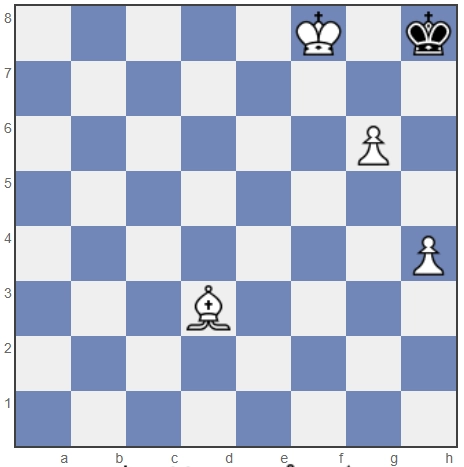
Stalemate in Magnus vs Karjakin, 2016 Also, notice how Carlsen has a bishop apart from the pawns, but Karjakin is left with only his king. In game-endings, such kings are called bare kings.
Other Popular Examples of Stalemate:
Anatoly Karpov vs Garry Kasparov in 1991.
Anatoly Karpov vs Judit Polgar in a Rapid Match (1998) in Budapest.
Viswanathan Anand vs. Aleksey Dreev in a Candidates Match (1991) in Madras.
Are you tired of losing games? Chat with EnthuZiastic Chess Experts and learn how to claim a draw. |
3. Is Stalemate and Checkmate the Same?
If the king can't move to a safe square, why can't it lead to a checkmate? How come the game is drawn when you can easily take the enemy king and the piece?
Many chess enthusiasts, even amateur chess players, have these questions about stalemate. And, I think they're right to wonder why we can't checkmate the opponent king when it has clearly no safe squares to go.
To understand why a stalemate and checkmate isn't the same, let's take a look at what is a checkmate.
4. What is Checkmate in Chess?
The threatened player must not be able to move its king to a safe square or capture the threatening piece. And only when one can do that is it a successful checkmate.
Definition: A checkmate in chess marks the end of the game. It's a game-ending position in which one player's king is threatened by the opponent player's pieces or pawns.
However, if the threatened player manages to move the king to a safer place or capture the attacking enemy piece/pawn, it's called check.
Let's take a look at an
Example. In the below picture, you can see the marvelous Checkmate by
In the below picture, you can see the marvelous Checkmate by Magnus Carlsen against Ian Nepomniachtchi. It was game 6 of their famous World Chess Championship battle in 2021.
After playing the longest in the World Chess Championship history, Carlsen won at move 135. Ng7.
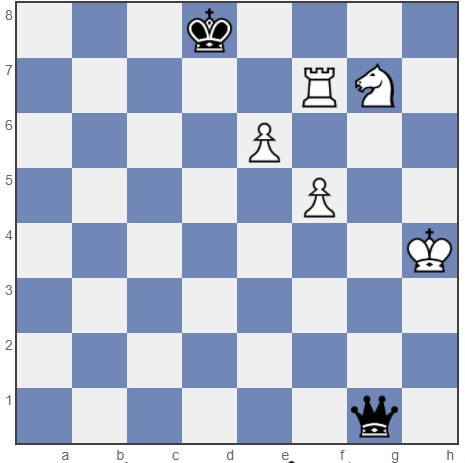
Carlsen vs Ian, 2021 Look at how the white rook, a pawn at e6, and the white knight are creating an inescapable trap for the black king.
Did you know Persians invented the concept of checkmate in chess? Checkout the History of Chess to learn how shatranj became chess. |
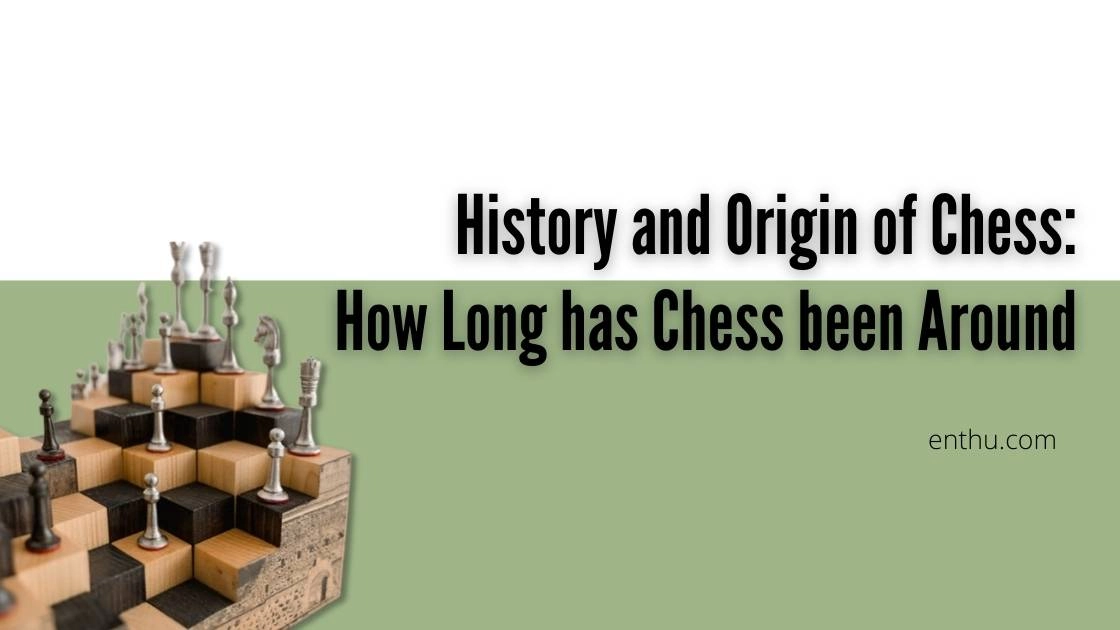
What is the Difference Between Stalemate and Checkmate?
The primary difference between Checkmate and Stalemate is a check. In Checkmate, the king is under check and can't move. In contrast, in a stalemate, the king isn't under check.
The result of the game differs. A checkmate ends up in a definite win. In contrast, Stalemate ends as a special type of draw.
One thing common is that a player doesn't have any legal moves both in a checkmate and a stalemate. ****A legal move is moving the king to a square where it isn't threatened. In Blitz chess, if you make an illegal move, your opponent can claim win before making any move.
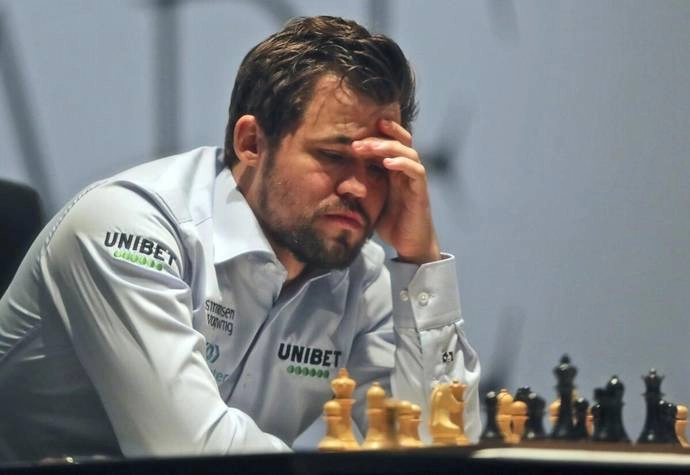
Magnus Carlsen at the FIDE World Championship at the Dubai Expo, in Dubai, 2021
1. I don't want a Stalemate
What should I do?
Many beginners often ask me how to avoid Stalemate. I understand ambitious players don't want to be stuck with a draw score. So, I have a few tips on how to avoid Stalemate in a chess game.
Go Through the Rules
Always keep in mind the difference between Stalemate and Checkmate. It's a stalemate when the king is trapped (can't make any legal moves) but not in check. So, unless you're sure it's Checkmate, don't trap the king.
Play Strategically
Avoid a Bare King

Remember, if your enemy player ends up with a bare king, the game's more likely to end in a stalemate. If not a stalemate, then it will be a draw due to insufficient material.
It's okay to be ferocious and ambitious during the middlegame of a chess game. But towards the endgame, be careful.
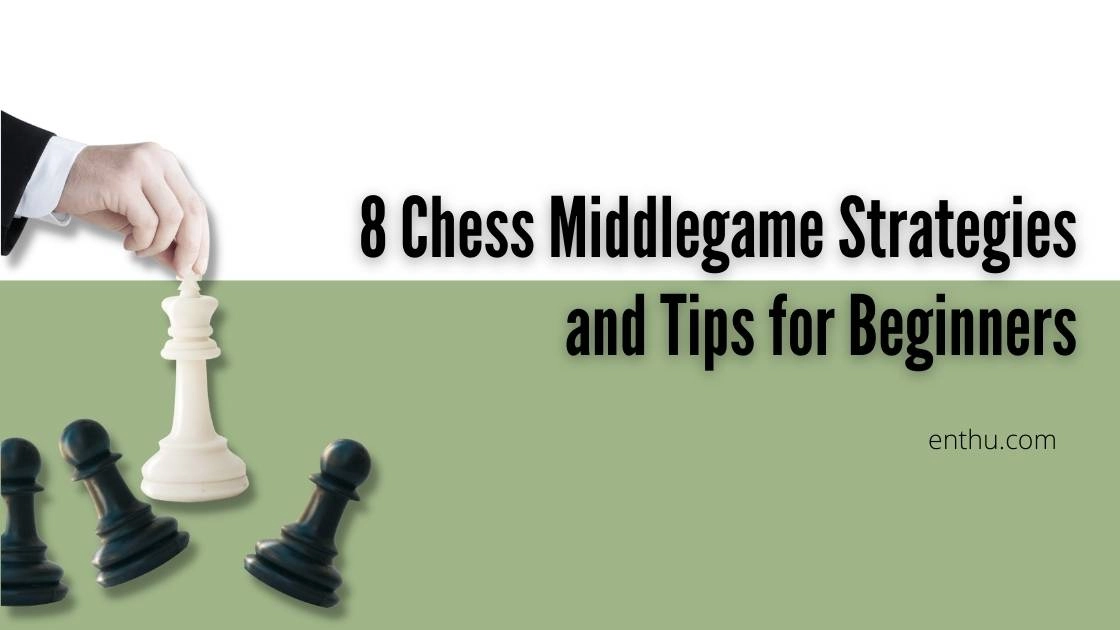
Don't capture all your enemy's pieces before ensuring a checkmate. Otherwise, there are chances for a stalemate.
Keep an Eye
At the Watch Even if you end up with an enemy bare king, there's still a chance for your win. However, if you cross the time limit with a lone king on the board, then it's surely a stalemate.
So, keep an eye on the time limit to avoid a stalemate.
Leave Legal Squares
For Your Enemy Let the opponent's king move around. Most stalemates happen because the trapped king can't make any legal moves. Therefore, leave at least two safe squares for the king to move.
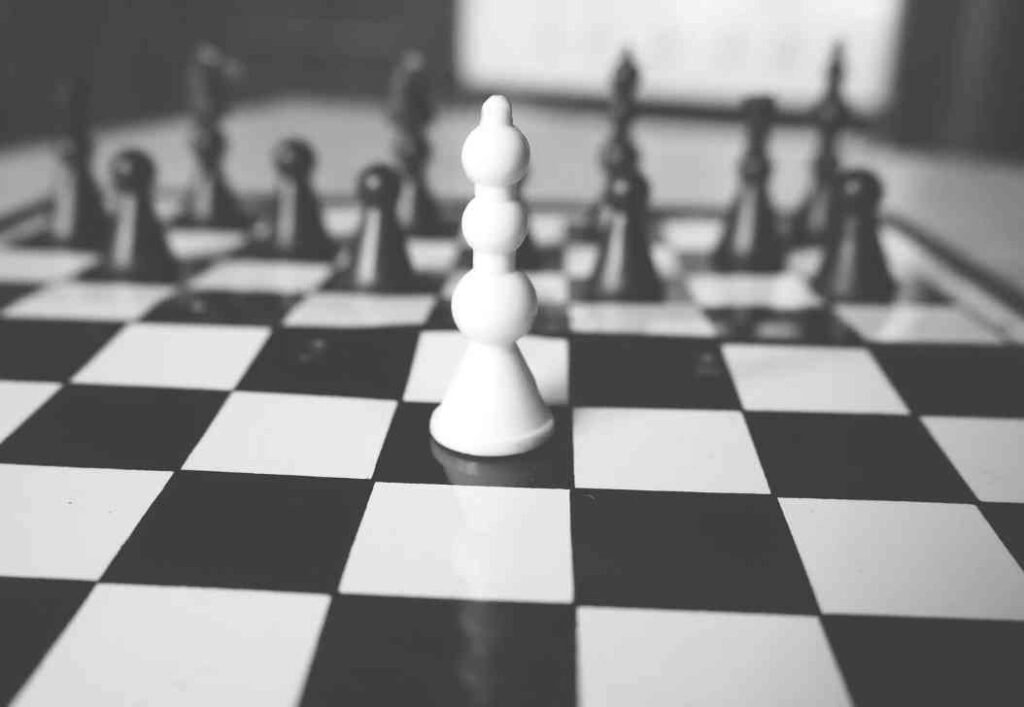
Find Out What's
Your Enemy is Playing In many chess games, when a player is on the weaker side, they try to manipulate the opponent towards a draw. Always keep an eye on what your enemy is trying to play. Try to figure out if they're pushing you towards a draw.
Want to avoid drawn games? Talk to EnthuZiastic Chess Experts today and learn tactics to win your upcoming games. |
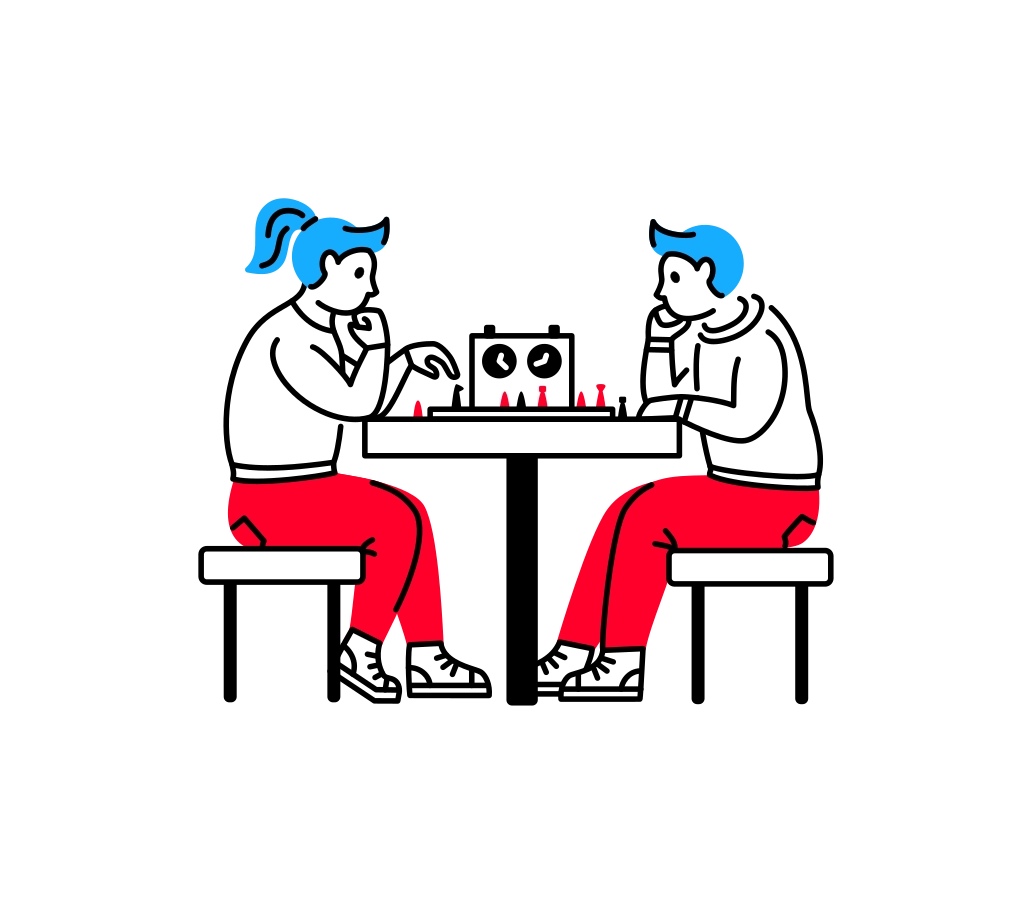

Conclusion
On the one hand, Stalemate is a boon for players in an inferior position. On the other hand, it can be a pain in the neck for players who want to win. Therefore, you should learn both the ways to manipulate and avoid a stalemate in a chess game. For beginners, I suggest learning other types of draw, such as told repetition and 50-rule, before jumping into learning stalemate.
FAQs
1) Why is a stalemate not a win?
A stalemate is not a win because it does not result in either side winning the game. In fact, it is quite the opposite. It leads to both compromising in a draw. To win a chess game, it's mandatory to checkmate the opponent without making any illegal moves. In a stalemate situation, it is not possible to win without illegal moves. Therefore, a stalemate is not a win.
2) Is Stalemate good in chess?
A stalemate is when a player with fewer pieces remaining on the board cannot move any of their pieces legally. At least, not legally. Therefore, Stalemate is a dead game. Logically, it's a loss for both the players to end up in a draw. However, if a weak player ends up achieving a draw with a high-rated chess player, it's fruitful for him.
3) Is it frowned upon to try to force a stalemate in chess?
While it is not typically seen as a desirable strategy, there are instances when it might be necessary to try to force a stalemate. It's usually done by playing a very defensive game and trapping your opponent's pieces so they can't make any more moves. While this might be frowned upon, it can sometimes be the only way to win the game.

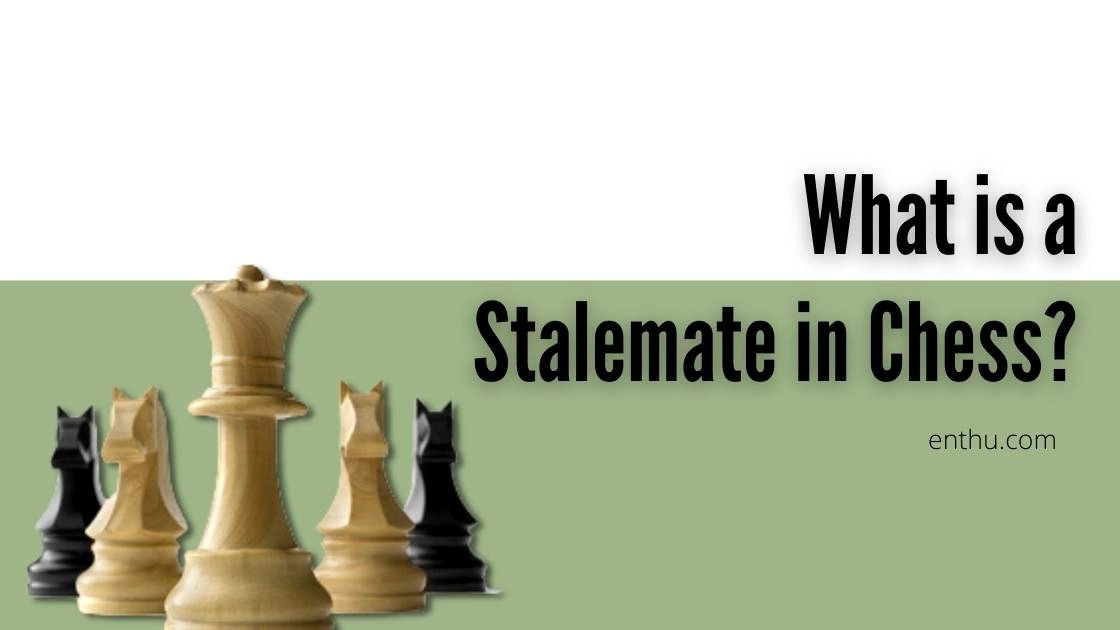
Comments